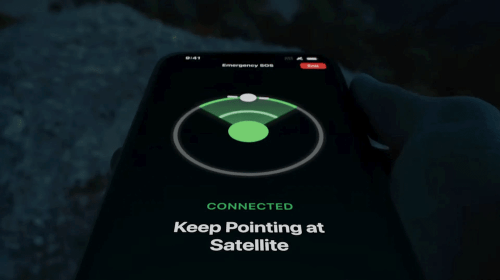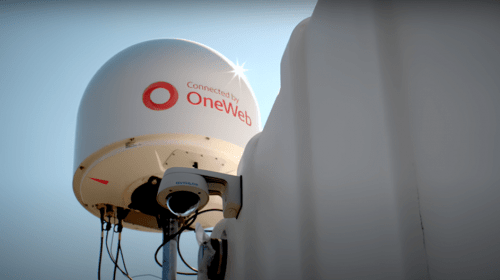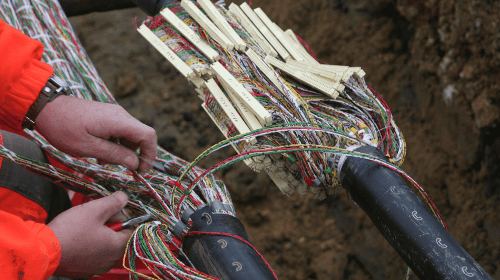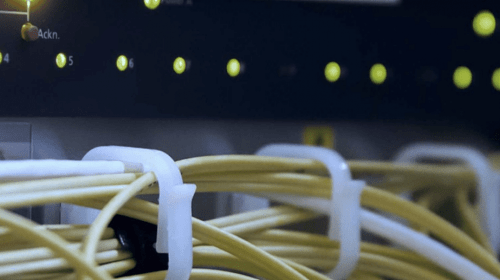Can it Compete?
Dec 16, 2022
The FCC has thus far granted SpaceX approval to deploy up to 7500 satellites, and there are plans for as many as 12,000 satellites. As of November 2022, over 3200 were operational. Amazon’s Project Kuiper has launched a couple of prototypes and has recently announced plans to start building as many as four satellites a day. How can they possibly catch up? How can they compete? Let’s take a look…
Amazon’s Project Kuiper gets its name from the Kuiper Belt, named after planetary scientist Gerard Kuiper. This is an icy region outside the orbit of Neptune. The plan is to put 3,236 satellites into low Earth orbit, providing broadband internet access to underserved people, like what Starlink and OneWeb are doing. Despite questions about whether there really are enough underserved subscribers, (see Consumer LEO – Are There Enough Unconnected?), Amazon is pushing forward with its constellation. How do they plan to compete?
Antenna
 Credit: Amazon
Credit: Amazon
Amazon claims that they will deliver a lower cost, more efficient antenna. The single aperture phased array antenna is twelve inches in diameter, which the company claims will lead to lower production costs.
The key advancement is combining transmit and phased array antennas into one aperture. Tiny antenna element structures overlay one over the other. This hasn’t been done before with Ku frequencies, because the frequencies are far apart. With hundreds of tiny antennas in each aperture, the receive antennas operating at 18 – 20 GHz and transmit antennas operating at 28 – 30 GHz, they were able to get a single lattice by looking at each antenna element uniquely. This reduced the size and cost of the antenna.
The design was kept as simple as possible to enable mass production by circuit board manufacturers. In late 2020, Amazon announced that a prototype antenna had delivered speeds up to 400 Mbps and had successfully streamed 4K-quality video with a GEO satellite. In April of this year, the company said they had gotten the price down to $500, as Starlink announced increased prices on its 20 x 12-inch antennas, with costs rising to $599 for the hardware. Service pricing is also going up to $110/mo. and a 1 TB data cap is being applied for usage during peak hours. Those of us in the business understand that the first users get great service, but as the system loads up with new subscribers, the performance falls off. Starlink users are experiencing this now.
Satellites
The FCC has approved Amazon’s plans for 3,236 satellites. They must launch 50% of the satellites no later than July 30, 2026, with the remaining satellites launched and operating no later than July 30, 2029. The company will start service after the first 578 satellites are launched. Analysts think Project Kuiper’s satellites weigh roughly twice as much as Starlink satellites, which means they are probably higher capacity, and can therefore get by with fewer satellites to deliver the same capacity. The Kuiper satellites will orbit a little higher than Starlink whose satellites orbit at about 340 miles (547 km). Amazon’s satellites will orbit between 370 to 390 miles (595 – 628 km). The slightly higher orbit means Amazon’s satellites will have a little larger footprint. It’s like shining a flashlight at the ground from 1 meter up. You have a small circular footprint. If you lift the flashlight up, the circle gets larger. The higher the satellite is, the less likely it is to be blocked by trees, buildings, etc.
ISP Implications
The ISP services offered by these satellite vendors are likely to be different. Amazon has indicated that it plans to use existing AWS (Amazon Web Services) as communication hubs for the new constellation. There are interesting upsides to this. Amazon currently provides cloud computing and storage services on a huge scale to countless websites and companies around the world. Anyone watching videos online, browsing, playing video games, is likely exchanging information with an AWS server. Normally, this content would flow from the Amazon server to the ISP, then to the customer, adding latency (delay). Note that the Amazon Prime Video streaming service, which the author currently enjoys, would become available to everyone on the planet. One can’t help but picture an internet service that bundles Amazon Prime into the subscription.
If Amazon is the ISP, then it will be talking to satellites from locations that have several of these physical servers. This means some of the data users request is only a few feet away. When that content traverses from AWS to the typical ISP, it can take longer than expected to traverse terrestrial wired networks. While Kuiper satellites will have slightly higher latency than Starlink, by virtue of being a little higher, they may offer latency advantages by eliminating the AWS to ISP delay, if they deliver the content themselves.
Security Concerns
As data privacy becomes increasingly important, having Amazon as your ISP can mean you get your data faster, however it also means Amazon has every detail about what you do on the internet. While VPNs can be used to hide the content of the information, they will still know who you are exchanging information with, and how much. The other issue with a VPN is that it means the data you would have shared with Amazon will instead be shared with the VPN provider, who you must trust to keep data private, not get hacked, and help deny authorities access to it. In addition, you will have lost some of the latency advantages in having AWS serve up your content.
Progress
Amazon claims to be using the same capabilities that provide very good and reliable cloud services, via AWS, to build out their backplane and network infrastructure, with the advantage of being able to offer QoS (quality of service) across the network, end to end. That makes this an enterprise service, as opposed to a best-effort consumer class service. Work has already begun with AWS to expand cloud computing into space. Last year they rolled out a Ground Station service for controlling satellites and downloading data from space. This year a new business unit devoted to aerospace and the satellite industry is hard at work.
 Amazon’s Kirkland, Washington Facility. Credit: Amazon
Amazon’s Kirkland, Washington Facility. Credit: Amazon
Having worked through Covid, Amazon is now using a remodeled research and development facility near Redmond, WA to test, service and build prototypes. To get the job done, they need vacuum chambers, and very large antennas to test radio frequencies. There are many open job opportunities in Redmond, with plans to get 200 highly skilled aerospace and manufacturing positions filled. At this level, the company says they can build as many as four satellites per day.
The stage is set, the players are being assembled, and on the surface, at least, it looks like Amazon’s Project Kuiper is in a good position to compete.





